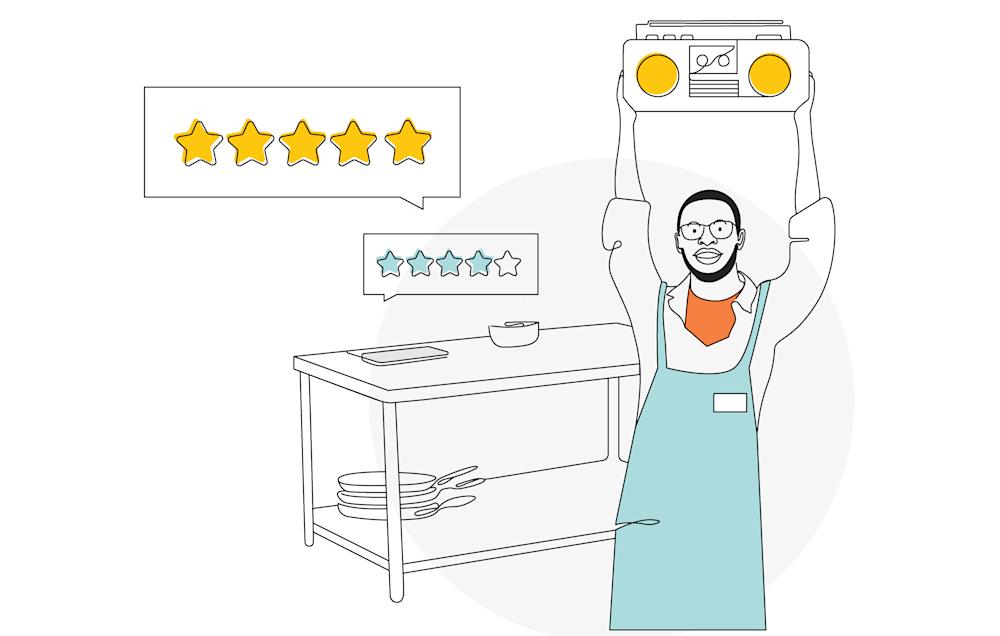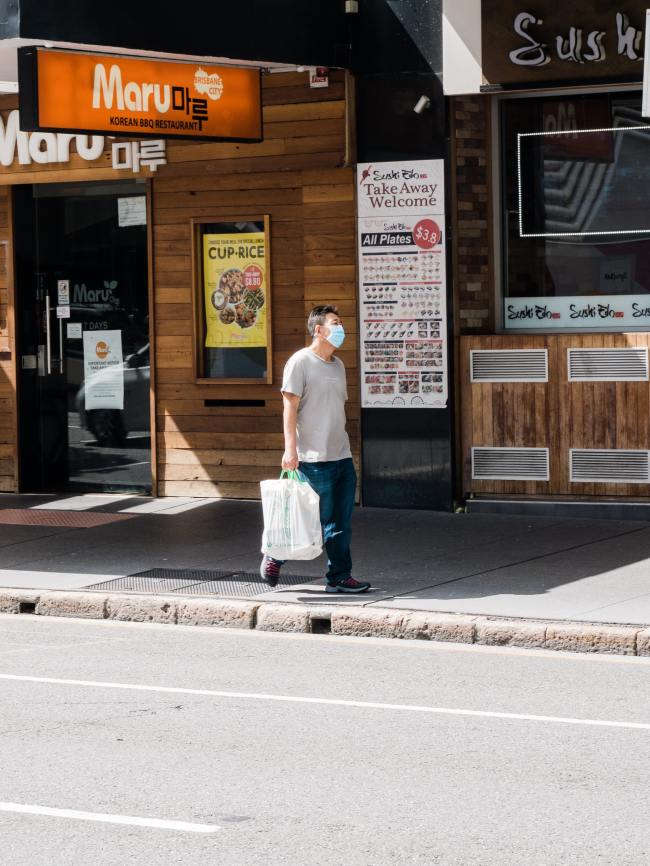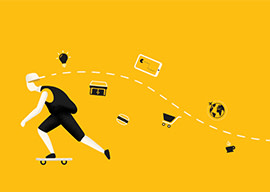
There’s a sandwich chain near my office. There aren’t many lunch destinations around, so there really isn’t any danger of losing my business. They asked if I wanted to join their loyalty program, and the answer was easy. I was going there anyway. I’d regularly buy a sandwich, probably around two to three times a week. Fast forward three months in, and I’ve now consumed a ballpark of 36 sandwiches—a number no one wants quantified—and spent around $360. All the while, I used their loyalty program and waited passively for that moment of, “Here’s a free sandwich!” Truthfully, that sandwich was starting to feel like a $500 cash sink, but it didn’t matter, right? I was going there anyway, the staff were good people, and ordering through the app was easy and straightforward.
Question is: Why wasn’t I feeling loyal to the chain? Why was loyalty earned with points and free cookies? Where was the 360 dollars’ worth of love I gave and never got back?
The Culling
It’s easy to start pointing fingers at COVID as the culprit behind the decline of major restaurant chains, but there’s evidence that the pandemic merely jumpstarted a culling: A request from the American customer for a multifaceted engagement model (like no contact-delivery, easy-ordering applications, and free food), and better working environments. A request that had gone unanswered for far too long. Those unwilling to adapt to the new normal found themselves scrambling with Band-Aid engagement strategies, while some took the leap and are hair-flipping their way towards higher engagement.
California Pizza Kitchen faced bankruptcy in mid-2020 but, after a debt-for-equity transaction paired with some healthy updates to their menu, they’re currently wading their way back into the fast food promised land by asking themselves, “How’s the food?”
Ruby Tuesday’s steady decline came to a head during the pandemic, closing about 30% of their 470 locations permanently. An article in Eat This, Not That! credited the downfall to the “shift in consumer attention from casual dine-in restaurants to fast food and fast-casual options.” If you aren’t providing diners with the means to engage in ways that they want or need, there is no points program that is going to swoop in to save the day.
Service with Benefits
When it comes to running a restaurant, most customers have relatively standard needs: good food, great service, and a clean and pleasant experience. Delivering on those four are table stakes in the American universe of infinite choices. Loyalty programs are starting to feel like the fifth horsemen of the apocalypse, with the credo of “ongoing engagement.”
What to do about it.
When it comes to designing a good loyalty experience, there are a couple housekeeping rules that matter far more now than they did 10 years ago. Restaurants need to hire not just fast and friendly employees but employees that love the brand as much as any top-tier customer. Restaurant employees reflect the brand and keeping them loyal isn’t just a ping pong table in the break room or the promise of “being a family.” Consumers are looking for strong ethics and awareness from their brands, so it’s only natural that COVID acted as a magnifying glass on the service industry. It’s a pivotal moment where restaurant brands must consider loyalty from both sides of the house. How they instill that loyalty starts with providing substantial employee benefits.
Starbucks, the company that calls their employees “partners,” has had an extremely gracious benefits package for some time now and can boast some of the highest ratings in employee satisfaction. From full coverage health benefits to 6-12 weeks paid maternity leave for both full-time and part-time employees, Starbucks is putting their people first and people notice.
Imagine a world where every employee is given $8 a day to give to any customer, a moment of recognition that didn’t even ask for a customer’s email. How might we empower employees to share a bit of the love in a way
that fosters even more for customers?
Tell Me I’m Great Before I Have to Be Great
Building relationships with customers proactively, instead of simply rewarding their “good behaviors,” can make customers feel like they’re winning.
I grew up in the Midwest, so I’ve always had this fantasy of walking into a local bar or restaurant and hearing “Hey, Meredith, how are the kids?!” The idea of a local establishment knowing me well enough to inquire is really the central element of this restaurant fantasy.
Loyalty starts with doing the job you set out to do, but it really shifts from table stakes to a relationship when a restaurant asks: “How do we love our customers more than they love us, or even love them first?” Because while diners normally value equality, in the restaurant industry, the power is in the people, and restaurants need to make diners and employees feel empowered. Imagine a diner sitting down for a date and the person on the other side of the table immediately requests a favor and holds the dinner check hostage as a reward for completing this favor. That’s the screwy way many loyalty programs are set up. Loyalty programs are backwards. They ask customers to spend more and more of their money and time to earn a restaurant’s loyalty. A bad date is an awful business model.
Here are some good dates we think are changing the game.
Panera introduced a new layer of their loyalty program, a coffee subscription program that boasted free coffee every day, every two hours, for the low-low price of $9 a month. The goal is to also use the time to entice customers to spend a bit more on a pastry or a breakfast sandwich, but never require them to do so. The benefit is always there, and the diner doesn’t feel like they have to jump through hoops to get rewarded.
In an attempt to migrate customers away from third-party food applications, Domino’s recently launched a campaign called “Surprise Frees,” where quite literally, upon check out a customer might find a free lava cake or bread sticks. The barrier to “free” was so low they’ve already given away an upwards of four million freebies since the launch in mid-august of 2021. The goodwill fostered from this campaign alone is the type of “loyalty” program that makes a real impact.
Loyalty Isn’t a Game, but It Should Be Fun
As we see restaurants strive to create new and engaging ways for customers to interact with their brand, I start to wonder if loyalty programs are just the first taste. It might be time we look to brands such as Glossier, which proved they could sell beauty products online by simply asking women to consider their own beauty. We see places like Domino’s giving gift cards to customers for local restaurants to help circumvent third-party app fees that only seem to keep rising. Loyalty programs are commonly constructed with tokens, cash rewards, and tasks, all of which tell diners that loyalty is a game they have to win. Don’t get me wrong, winning is fun, but isn’t fostering meaningful relationships that last more important? Diners are looking for relationships that go beyond points.
We’ve been holed up in our homes for an excessively long time. And while we want to keep no-contact delivery and our many food ordering apps, we’re still flocking to plastic igloos with space heaters on rooftops and paying $70 a person to sit on the floor in a giant warehouse. When it comes to experiences, food is something we all need. So, if diners are asking to go beyond coupons and point models, we need to then ask ourselves: What if loyalty wasn’t a program but simply a consideration across every touchpoint of the experience, interconnected in ways that caused customers to feel like they needed to say thank you?




